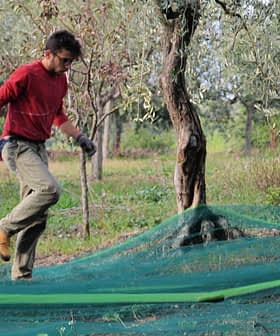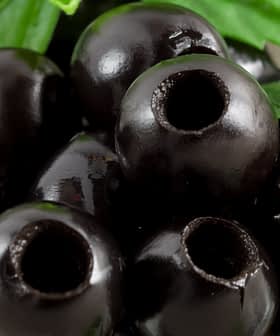Researchers from the University of Jaén and the Andaltec Foundation have manufactured plastic suitable for food packaging and industrial uses from olive grove pruning waste.
The researchers refined biomass obtained from olive leaves and branches into biopolymers that can resist temperatures up to 300 ºC or 400 ºC, depending on the type of treatment.
As a result of their high heat resistance, the scientists said the biopoymers are an excellent candidate for use as biofilm in food packaging applications.
See Also:Olive Milling Byproducts May Improve Animal FeedThe compound of interest in any type of bioplastic manufacturing is the cellulose in lignocellulose, which is also composed of hemicellulose and lignin. Olive tree biomass contains between 30 and 40 percent cellulose.
“[Lignocellulose’s] appeal as a sustainable source of biomaterials is largely attributed to different factors such as [its] low cost, widespread availability and chemical composition,” the researchers wrote in the study published in the scientific journal Biofuels, Bioproducts and Biorefining.
During their investigation, the researchers refined the biomass fibers into cellulose pulp and then chemically transformed this into cellulose acetate. “The production of cellulose acetate using this approach presents some advantages from different perspectives,” they wrote.
The researchers argued that transforming olive grove waste into bioplastic provides superior economic benefits for farmers than using the waste for composting, energy generation or soil cover.
“The economic advantage is that it constitutes a new way of revaluing olive tree pruning biomass that allows polymers to be obtained that have high added value and are in great demand in the market,” the researchers wrote.
According to María Dolores La Rubia, a co-author of the study and researcher at the University of Jaén’s department of chemical, environmental and materials engineering, olive grove waste would also be a cheaper alternative for plastic manufacturers. Synthetic plastics are made from refining crude oil, natural gas or coal.
See Also:Researchers Investigate Solar Panel and Olive Grove Synergies“The Andalusian olive grove could thus become the main supplier of raw materials for the manufacture of bioplastics in Spain,” she said.
Additionally, the researchers argued that the new application of the olive farming byproduct could reduce its environmental impact. By some estimates, high-density and super-high-density farms in Spain yield 30 tons of olive tree pruning biomass per hectare each year.
“Traditionally, this residue is used in situ as a soil amendment, or in most cases it is incinerated, significantly increasing the carbon footprint of the olive oil industry,” the researchers wrote.
They added that further research into using olive tree pruning biomass as an ingredient in plastic could help create new business opportunities in Andalusia.
“There are social advantages, given that it has strong potential to generate new business models, based on the principles of the circular economy, in agricultural areas of southern Spain where olive grove cultivation is concentrated and which are, in many cases, at high risk of depopulation,” they added.








